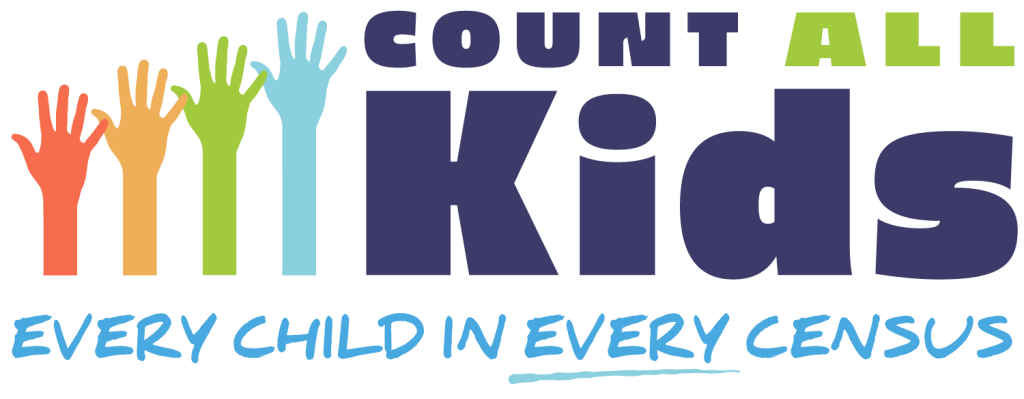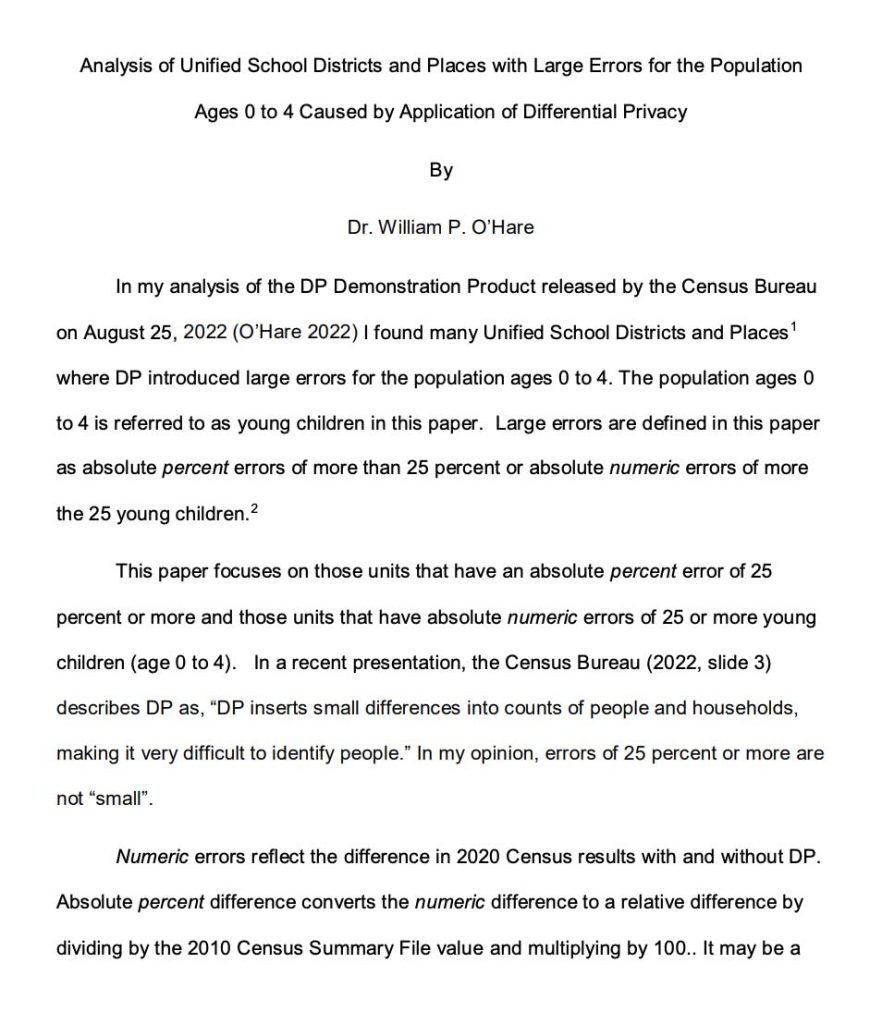In my analysis of the DP Demonstration Product released by the Census Bureau on August 25, 2022 (O’Hare 2022) I found many Unified School Districts and Places[1] where DP introduced large errors for the population ages 0 to 4. This paper focuses on those units that have an absolute percent error of 25 percent or more and those units that have absolute numeric errors of 25 or more young children (age 0 to 4).
I believe geographic units with large errors will be the biggest problem in terms of the application of DP to the 2020 Census, particularly if such errors are accompanied by changes in funding. I understand DP is a complicated methodology, but it is not clear to me why the Census Bureau cannot truncate the distribution from which it draws the random numbers used in applying DP, to make sure large errors are not injected into the reported data. If the errors injected by DP could be kept to less than 5 percent or less than 5 people, I believe the application of DP in the 2020 Census would be much more acceptable.









